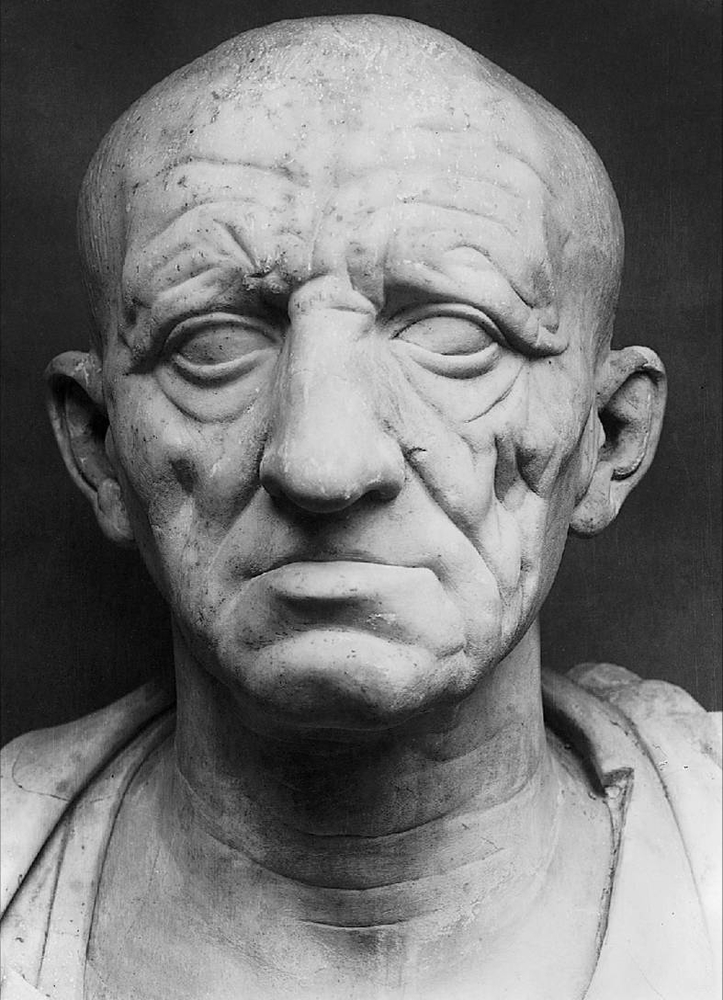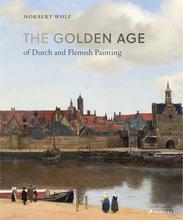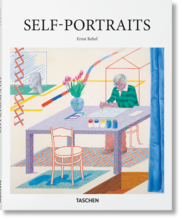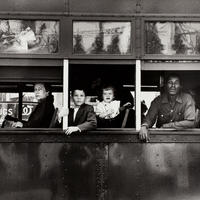More about Rembrandt
- All
- Info
- Shop

Sr. Contributor
Rembrandt was Kanye before Kanye was Kanye...except poor.
Rembrandt van Rijn was a Dutch Golden Age painter born in 1606 in Leiden. He attended Latin school and started studying at the University of Leiden at age 14. However, he dropped out and was soon apprenticed to Peter Lastman in Amsterdam and then moved back to Leiden for an apprenticeship to Jacob van Swanenburgh to study history painting. In 1624, he opened his own workshop with his co-pupil to Lastman, Jan Lievens. At age 19, he painted the Stoning of Saint Stephen, his first religious painting and equivalent to Kanye’s debut album, College Dropout, claiming his status as painter of the esteemed history genre.
Although Rembrandt never went on the Italian tour that was basically the initiation into the fraternity that is the 17th-century art cognoscenti, his work was heavily influenced by Caravaggio, employing dramatic lighting and dynamism. Religion played a large role in Rembrandt’s life, as he grew up in a period of great religious upheaval due to the Protestant Reformation, and as a Baroque artist, many of his works were dramatic depictions of religious subjects.
In 1631, he moved back to Amsterdam to start an academy that specialized in portrait commissions with art dealer Hendrick van Uylenburgh. Uylenburgh and him were not just business partners in their Amsterdam art studio start-up, but roommates as well. Rembrandt moved in with Uylenburgh upon his arrival in Amsterdam, and married Uylenburgh’s cousin and subject of many of his works, Saskia. In 1639, he was happily married (even though his first three children – Rumbartus, Cornelia, and Cornelia – died within months of being born), he was at the height of his career, and he had just bought an expensive house in the fashionable side of town, albeit mostly through borrowed money. He had also developed a mild shopping addiction, compulsively buying art and collecting antiques, props, and weapons to be used in his paintings. To compensate for his prodigal spending habits, he often artificially inflated the prices of his paintings by bidding them up himself.
In 1641, Titus was born, Rembrandt’s only child that would live to adulthood. Shortly after, Saskia fell ill. Rembrandt hired a widowed wetnurse to take care of his infant child, Geertge Dircx, who later became his lover. Saskia created a will that left her fortune to Titus and Rembrandt, but only if he did not remarry. She died shortly after in 1642. Rembrandt and Geertge continued their relationship, Rembrandt even gifting her with a few of Saskia’s rings, but continued to live together unmarried. However, he soon fell in love with another servant, the much younger Hendrickje Stoffels. This did not go down well with Geertge, who took him to court on the grounds that he had a “breach of promise” (basically that he promised to marry her), and he countersued because she had pawned some of Saskia’s jewelry.
Hendrickje and him lived happily ever after out of wedlock due to the conditions of Saskia’s will that left Rembrandt too poor to afford to consider remarriage. When their daughter, named (what else) Cornelia, was born in 1654, Hendrickje was labeled as a whore and banned from receiving communion due to her relationship with Rembrandt. And even when Titus turned 14, the age that made him eligible to control his own will, and Rembrandt got Titus to install himself as the sole heir to Saskia’s fortune creating a loophole that would allow him to remarry; he still didn’t marry Hendrickje.
Amsterdam was hit with a depression in the 1650s, and in 1656, Rembrandt filed for bankruptcy. More specifically he filed for cession borum which allowed him to avoid imprisonment, but meant that all his possessions, including his house and collection of paintings, were sold for a pittance.
Rembrandt had money problems until his death, living with Hendrickje and Titus in a rented property. They opened up an art shop that sold his paintings and Titus became his employer, at least by law, to protect him from his money lenders. Even during this time of economic hardship, Rembrandt still found a way to fuel his shopping addiction including but not limited to selling Saskia’s tomb and bidding for paintings (especially if they were by German painter, Hans Holbein).
Sources
- "Caravaggism - Styles - Rijksstudio." Rijksmuseum. Accessed June 14, 2019.
- Montias, J. M. The Journal of Economic History 48, no. 4 (1988): 949-51.
- “Biography: Rembrandt Van Rijn (1606-1669).” The National Gallery of Art. Accessed June 10, 2019.
- “Rembrandt." The National Gallery, London. Accessed June 10, 2019.
- Schama, Simon. "Rembrandt and Women." Bulletin of the American Academy of Arts and Sciences 38, no. 7 (1985): 21-47. http://www.jstor.org/stable/20171780.

Contributor
Rembrandt van Rijn was loving life and doing great...until he got married.
He took out a giant mortgage to buy an expensive house. This, combined with his lavish spending on art, landed him in financial trouble that lasted pretty much the rest of his life. Eventually, Rembrandt was banned from selling paintings altogether by the Amsterdam Painter's Guild because the Guild got tired of him running up debts and not paying. To get around this obstacle, he set his son and his second wife up in the art business, ate his pride, and worked for them as an employee.
Money troubles weren't all that plagued poor Rembrandt. His first three children all died shortly after birth, and only his fourth made it to adulthood. While said fourth child was still a child, Rembrandt's wife got tuberculosis and died. Until you feel too sorry for him, it's important to note Rembrandt had an affair with the nurse who took care of his dying wife. Though this also did not have a happy ending. When Rembrandt dumped the mistress, she accused him of breach of promise to marry her and got alimony from him. She also pawned jewelry from wife #1. Rembrandt tried but failed to have her committed to a poor house.
After the nurse, sad old Rembrandt made a move on his maid. She was much younger, and her church did not approve. They accused her of having "committed the acts of a whore with Rembrandt the painter." Ouch. Left alone, Rembrandt painted himself - a lot. He produced over 90 self-portraits! We assume he couldn't afford models, or no longer trusted himself around young women. Otherwise, we're not sure he would so often highlight his less-than-attractive mug.
Featured Content
Here is what Wikipedia says about Rembrandt
Rembrandt Harmenszoon van Rijn (/ˈrɛmbrænt, ˈrɛmbrɑːnt/;
Dutch: [ˈrɛmbrɑnt ˈɦɑrmə(n)ˌsoːɱ vɑn ˈrɛin] ⓘ; 15 July 1606 – 4 October 1669), mononymously known as Rembrandt, was a Dutch Golden Age painter, printmaker, and draughtsman. He is generally considered one of the greatest visual artists in the history of Western art. It is estimated that Rembrandt's surviving works amount to about three hundred paintings, three hundred etchings, and several hundred drawings.
Unlike most Dutch painters of the 17th century, Rembrandt's works depict a wide range of styles and subject matter, from portraits and self-portraits to landscapes, genre scenes, allegorical and historical scenes, biblical and mythological subjects and animal studies. His contributions to art came in a period that historians call the Dutch Golden Age.
Rembrandt never went abroad, but was considerably influenced by the work of the Italian Old Masters and Dutch and Flemish artists who had studied in Italy. After he achieved youthful success as a portrait painter, Rembrandt's later years were marked by personal tragedy and financial hardships. Yet his etchings and paintings were popular throughout his lifetime, his reputation as an artist remained high, and for twenty years he taught many important Dutch painters. Rembrandt's portraits of his contemporaries, self-portraits and illustrations of scenes from the Bible are regarded as his greatest creative triumphs. His approximately 40 self-portraits form an intimate autobiography.
Check out the full Wikipedia article about Rembrandt



























Like Caravaggio, but Dutcher (his work mainly, but also him). Basically Caravaggio minus the crimson in the paintings and minus the the violence in his personal life. Ok, so not very much like Caravaggio, except for the brightly lit subjects and dark moody backgrounds. And they are both among the best painters ever to hold a brush.